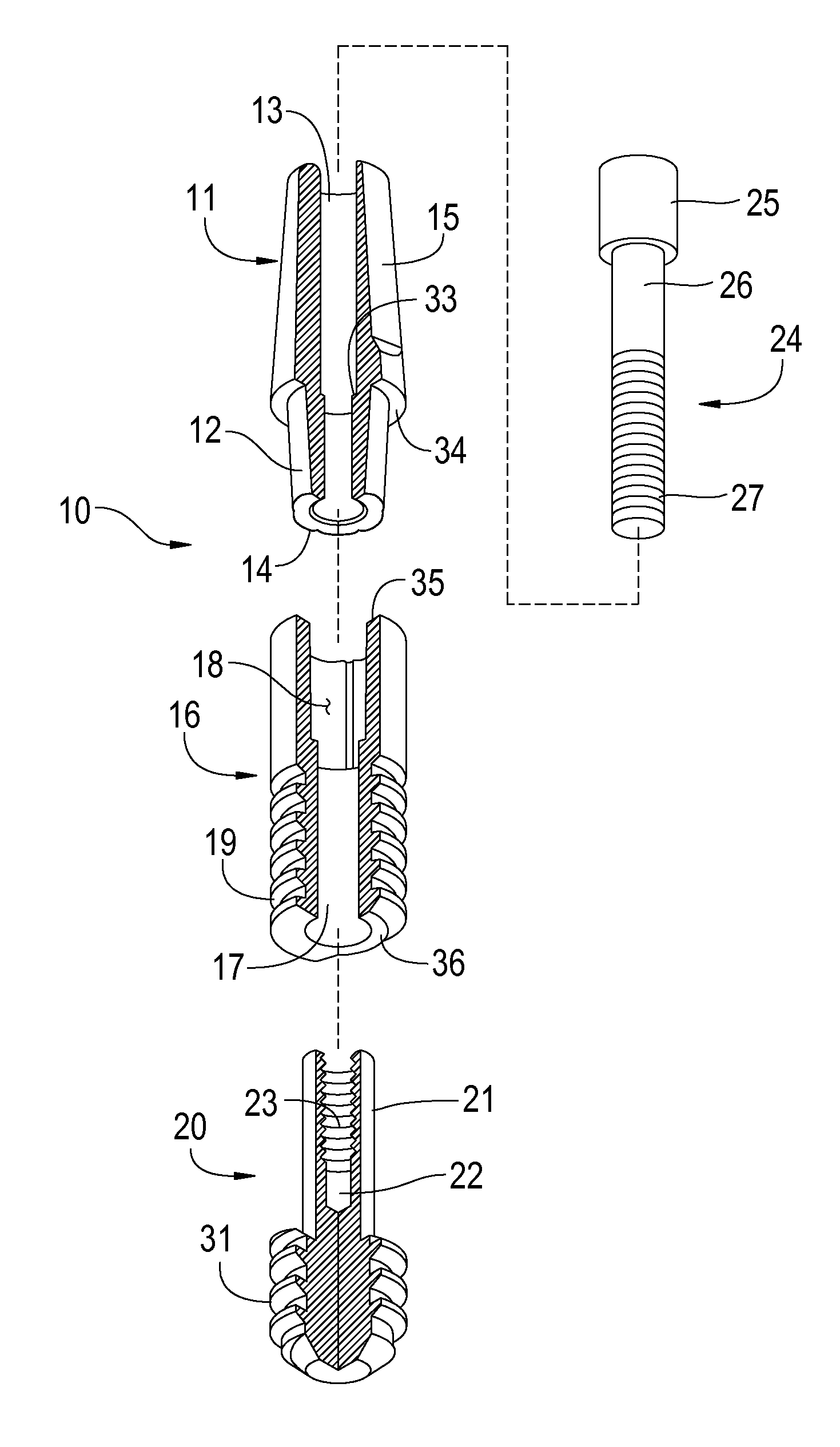Ceramic and metal composite dental implant
a ceramic and metal composite technology, applied in dental implants, dental surgery, medical science, etc., can solve the problems of ceramic implants that have a history of breakage, implants are subjected to very high forces, and prosthetic teeth look unnatural and unhealthy, so as to achieve the initial stability of bone, promote gum tissue adhesion, and reduce the effect of the implant diameter
- Summary
- Abstract
- Description
- Claims
- Application Information
AI Technical Summary
Benefits of technology
Problems solved by technology
Method used
Image
Examples
Embodiment Construction
[0020]The preferred embodiment of the present invention is shown in FIGS. 1-3, wherein FIG. 1 is an exploded perspective view, partially in section, of the invention showing the components of the composite dental implant 10. An abutment 11 has a hollow interior 13, an exterior shelf 34, and an anti-rotational feature 12. The internal diameter of the anti-rotational feature 12 is slightly less than that of the abutment 11, producing an interior shelf 33. The anti-rotational feature 12 has convex protrusions 14 on its exterior surface. The abutment 11 may be made of ceramic or metal, such as titanium or gold.
[0021]The composite dental implant 10 has a hollow ceramic cylinder 16 having an interior cavity 17, a bottom (apical) end 36 and a top (coronal) end 35. The internal upper portion of hollow ceramic cylinder 16 has concave depressions 18 on its inner surface to engage the external convex protrusions 14 of the anti-rotational feature 12. Hollow ceramic cylinder 16 has external groo...
PUM
| Property | Measurement | Unit |
|---|---|---|
| diameter | aaaaa | aaaaa |
| diameter | aaaaa | aaaaa |
| diameter | aaaaa | aaaaa |
Abstract
Description
Claims
Application Information
 Login to View More
Login to View More - R&D
- Intellectual Property
- Life Sciences
- Materials
- Tech Scout
- Unparalleled Data Quality
- Higher Quality Content
- 60% Fewer Hallucinations
Browse by: Latest US Patents, China's latest patents, Technical Efficacy Thesaurus, Application Domain, Technology Topic, Popular Technical Reports.
© 2025 PatSnap. All rights reserved.Legal|Privacy policy|Modern Slavery Act Transparency Statement|Sitemap|About US| Contact US: help@patsnap.com



